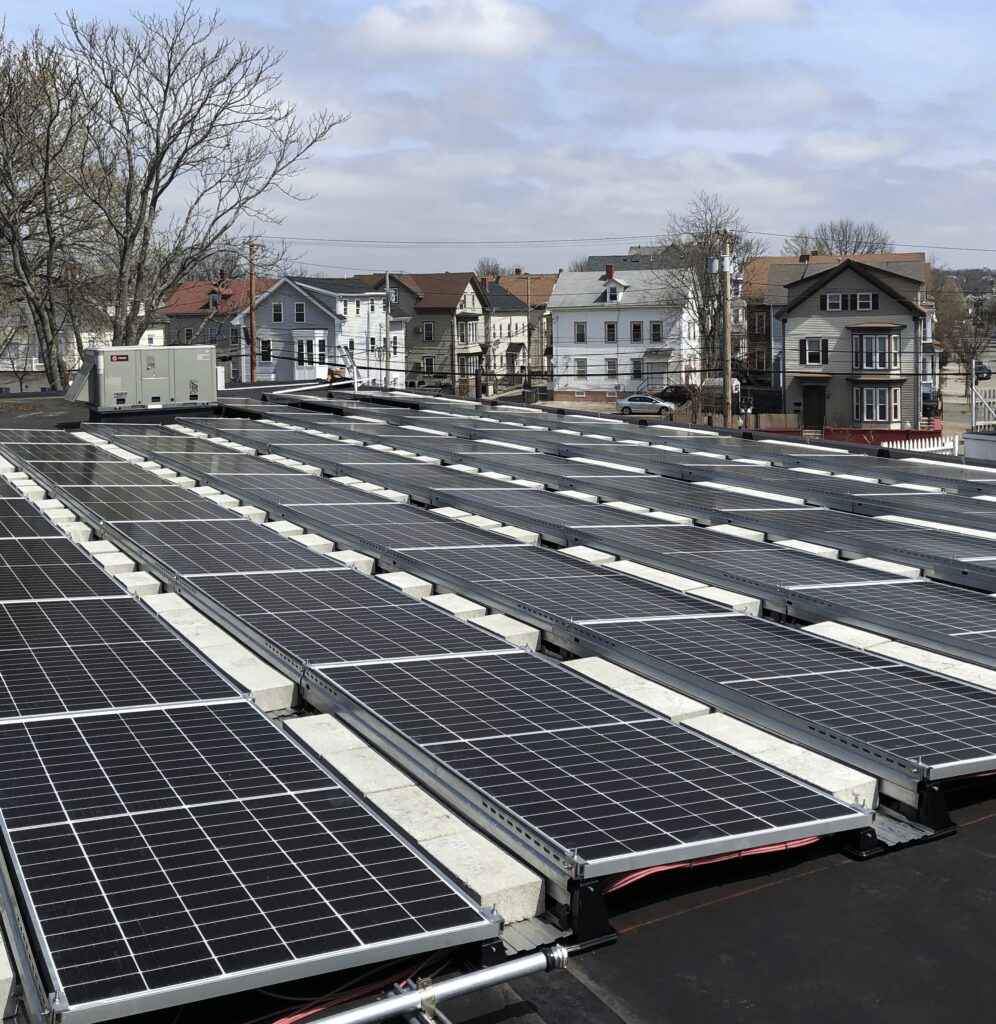Commercial solar energy systems operate through a series of carefully integrated processes that efficiently convert sunlight into usable electricity. Here’s a deeper look at each step on how commercial solar works:
Sunlight Absorption
Solar panels, typically mounted on rooftops, parking canopies, or ground-mounted arrays, are designed to capture sunlight and convert it into electricity. These panels contain photovoltaic (PV) cells made of semiconductor materials (such as silicon) that generate an electric charge when exposed to sunlight. The larger the system and the more direct sunlight it receives, the greater the energy production. 
DC to AC Conversion
The electricity generated by solar panels is in the form of direct current (DC), but most commercial buildings operate on alternating current (AC) electricity. To make the energy usable, inverters are installed to convert DC into AC. There are two main types of inverters used in commercial systems:
- String inverters – Connect multiple panels to a single inverter, commonly used in large commercial installations.
- Micro-inverters – Attached to individual panels for optimized performance, often used when shading or variable panel orientation is a concern.
Energy Distribution
Once converted into AC power, the electricity is distributed throughout the commercial building’s electrical system. This energy is used to operate essential business functions, such as:
- Lighting – Powering indoor and outdoor lights.
- HVAC Systems – Running heating, ventilation, and air conditioning systems to maintain comfortable temperatures.
- Machinery & Equipment – Supporting manufacturing processes, refrigeration, or specialized industry-specific tools.
- Office Electronics – Supplying power to computers, printers, and communication systems.
Grid Connection & Net Metering 

Most commercial solar systems remain connected to the utility grid to ensure a reliable power supply. When solar production exceeds the building’s energy demand, the excess electricity is sent back to the grid. Many utility companies offer net metering, a program that provides credits for the surplus energy businesses contribute. These credits can offset electricity costs when solar generation is low (such as at night or on cloudy days), helping to reduce overall energy expenses.
Battery Storage (Optional)
To enhance energy resilience and maximize cost savings, some businesses integrate battery storage into their solar systems. Batteries store excess energy generated during the day and can be used during:
- Peak Demand Hours – When electricity rates are higher, stored solar energy can reduce dependence on the grid.
- Power Outages – Provides backup power to maintain operations during grid failures or emergencies.
- Nighttime Use – Enables businesses to utilize solar energy even after the sun goes down.
Final Thoughts on How Commercial Solar Works
A well-designed commercial solar system efficiently captures, converts, and distributes solar energy to reduce costs and improve sustainability. Whether connected to the grid with net metering or paired with battery storage for energy independence, commercial solar is a smart investment for businesses looking to cut operational expenses and reduce their carbon footprint.
Want to explore how solar can work for your business? Contact us today to get started! Schedule a free consultation here.
If you liked this article, you may also like:
Why 2025 is the Year to Go Solar (and Why You Shouldn’t Wait)
